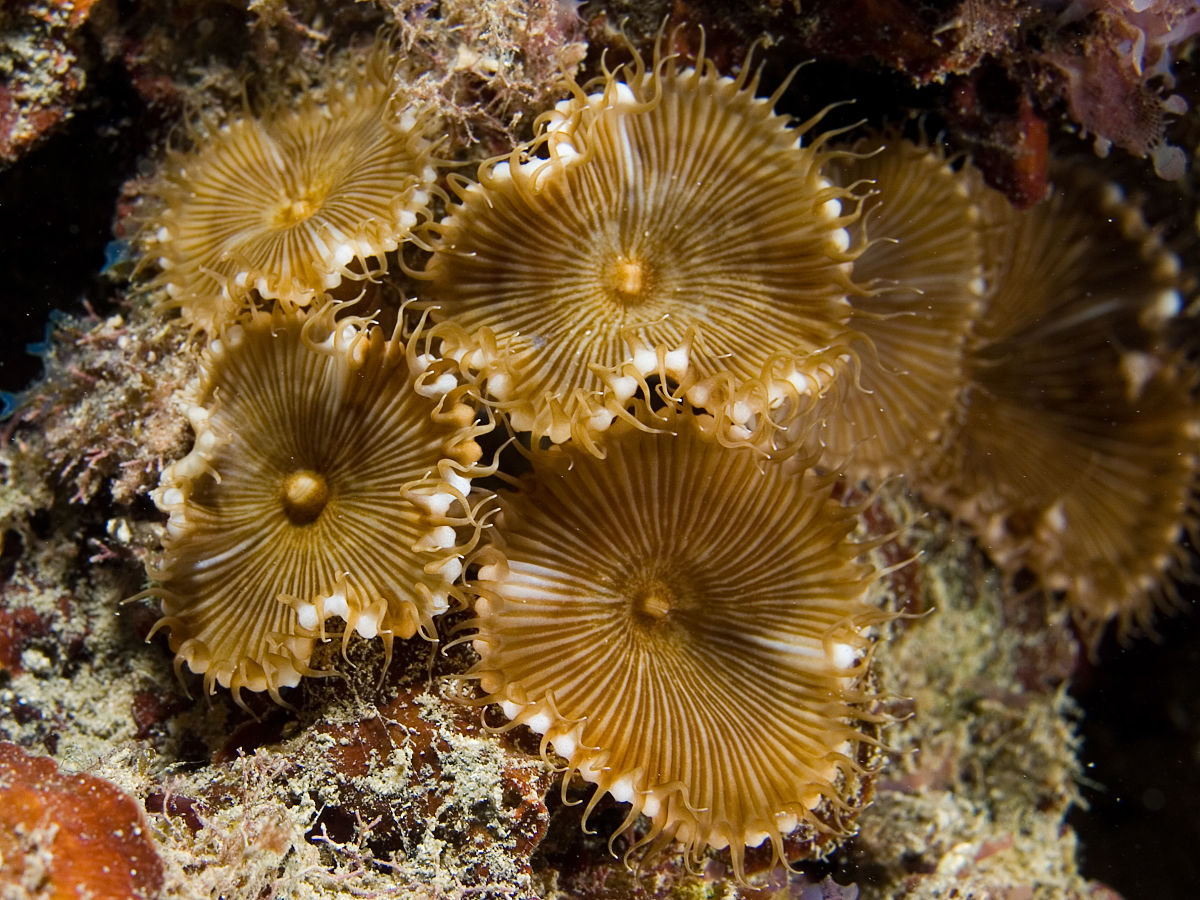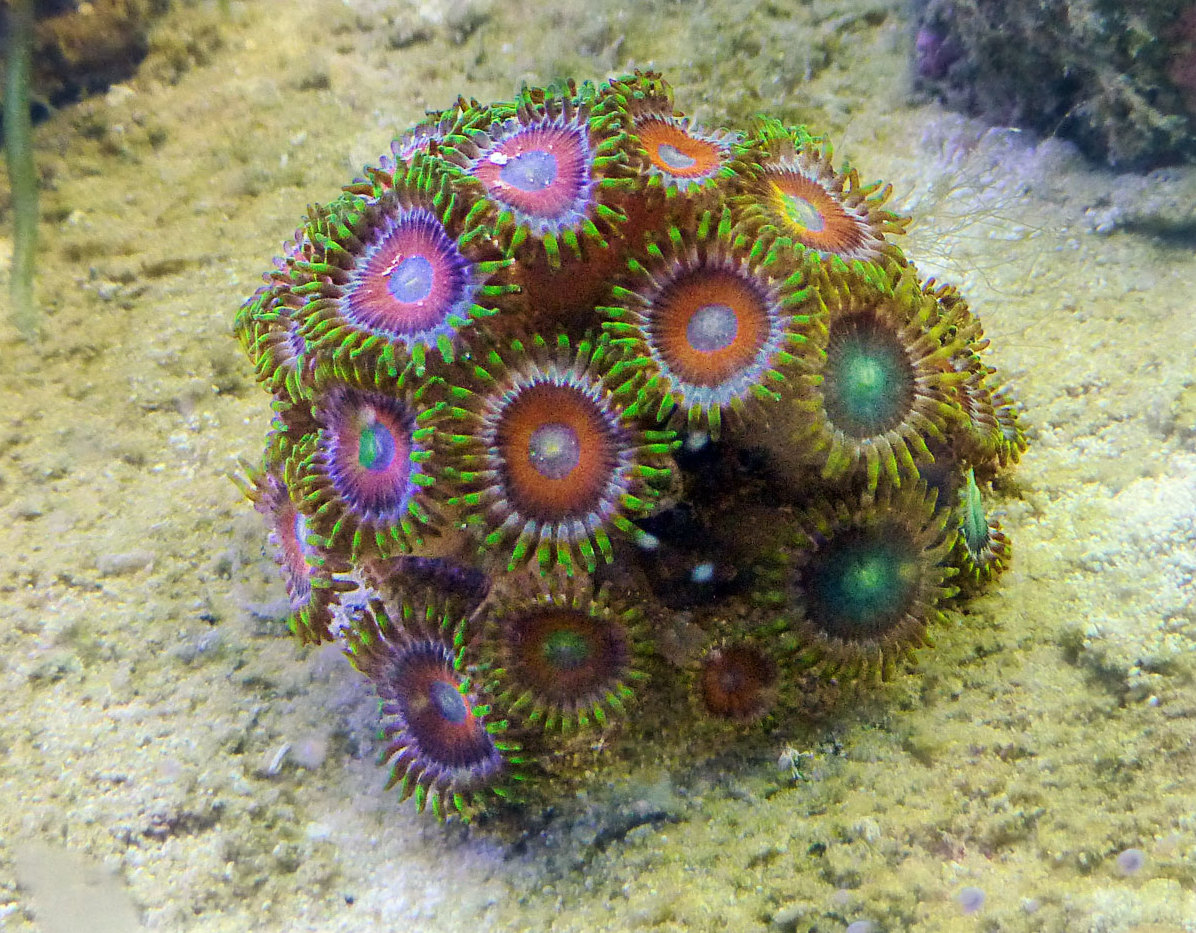I’m new to this hobby, I’ve been searching about corals and I have found that palys and zoas have a deadly toxin called palytoxin, my question is that if all corals have this toxin or only that type of corals?
Navigation
Install the app
How to install the app on iOS
Follow along with the video below to see how to install our site as a web app on your home screen.
Note: This feature may not be available in some browsers.
More options
You are using an out of date browser. It may not display this or other websites correctly.
You should upgrade or use an alternative browser.
You should upgrade or use an alternative browser.
Palytoxin in corals
Palythoa and some Zoathid coral have Palytoxin.I’m new to this hobby, I’ve been searching about corals and I have found that palys and zoas have a deadly toxin called palytoxin, my question is that if all corals have this toxin or only that type of corals?
Other coral do not.
Palytoxin Poisoning: Marine Aquarium Safety | SA Health
Palytoxin poisoning: Zoanthid coral species can contain Palytoxin and cause dangerous symptoms if not handled carefully. Protect your family with these aquarium tips.
This.It is so extremely rare. Not something to really worry about. Wear PPE while handling zoas/palys and then wash your hands.
I have fragged so many zoas and palys know to have the toxin (grandis) never had an issue. Just be careful.
I asked the same question a few years ago and this is the list that was given to me :
Zoanthids (zoas) - soft coral
Palythoa (palys) - soft coral
Toadstool (sarcophyton) - leather
Devil’s hand (labophytum) - leather
Finger (sinularia) - leather
Tree or branch coral (lemnalia) - soft coral
Nephthea - leather
Cespitularia - soft coral
Zoanthids (zoas) - soft coral
Palythoa (palys) - soft coral
Toadstool (sarcophyton) - leather
Devil’s hand (labophytum) - leather
Finger (sinularia) - leather
Tree or branch coral (lemnalia) - soft coral
Nephthea - leather
Cespitularia - soft coral
I understand your concern. I have a toddler in the house and was worried about it as well when I started.
But only palys produce it and use it as a defense mechanism. It resides within the tissue of the coral.
I recall the tidal gardens spotlight on Zoas stating that zoas can contain paly toxin, but that it was unclear if they produce it or absorb it.
It’s up to you, to weigh the risk versus the reward. Zoas are gorgeous corals. And present the most risk when trying to propagate or frag the coral. Or when atttempting to remove them from your rocks(usually people removing palythoa)
Personally, I think most palys are ugly by comparison anyways. And won’t be adding them intentionally because they definitely contain the toxin. I do have Zoas and am adding more soon.
If you have a family or roommates it may be worth mentioning to others that this potential exists.
It is a very rare thing, But I believe in Murphy’s law and so take all precautions you can if you choose to frag palys or Zoas. Even though only some Zoas contain it, nobody says which ones do and do not. As stated by others PPE is a great idea, mask, goggles, gloves and possibly a face splash shield.
But only palys produce it and use it as a defense mechanism. It resides within the tissue of the coral.
I recall the tidal gardens spotlight on Zoas stating that zoas can contain paly toxin, but that it was unclear if they produce it or absorb it.
It’s up to you, to weigh the risk versus the reward. Zoas are gorgeous corals. And present the most risk when trying to propagate or frag the coral. Or when atttempting to remove them from your rocks(usually people removing palythoa)
Personally, I think most palys are ugly by comparison anyways. And won’t be adding them intentionally because they definitely contain the toxin. I do have Zoas and am adding more soon.
If you have a family or roommates it may be worth mentioning to others that this potential exists.
It is a very rare thing, But I believe in Murphy’s law and so take all precautions you can if you choose to frag palys or Zoas. Even though only some Zoas contain it, nobody says which ones do and do not. As stated by others PPE is a great idea, mask, goggles, gloves and possibly a face splash shield.
Last edited:
Honestly, for most people it's not an issue - almost all of the issues I've seen with palytoxin have involved people doing some particularly dangerous things with palys/zoas (like boiling rocks, scrubbing the coral rock's spotless in poorly ventilated rooms with a toothbrush, etc.); basically as long as you wear protective gear, you're careful, and you don't aerosolize the toxin, you should be fine:
Palys, zoas, and other things (surprisingly, it can be a bit complicated what does and doesn't fit this category) may all contain palytoxin, but as long as your not ingesting it/something that contains it, getting it in cuts (or your eyes), or (most commonly) aerosolizing it, it shouldn't hurt you at all.
If you want some in depth reading (that I think covers most of the topic) on palytoxin, see my posts in the threads below (some of threads have multiple posts from me):

Can the toxins from zoas actually kill you?
My family is worried about me getting zoas because there toxic, can the toxins actually kill you?www.reef2reef.com

Newbie Palytoxin Concerns
So a little background info to start…we set up a 55 gallon tank with the intent of having a fish only tank. At the end of November we purchased 2 small ($10.00) coral frags. Unfortunately we did not do research and blindly purchased what turned out to be a Zoa and a Paly I believe. Fast...www.reef2reef.com

EMERGENCY - Anyone ever haddermal palytoxin poisoning on here.
To some ot up had a patch of gha on a huge zoa rock in tank was using forceps to pull it off while in the tank. Think i may have disturbed them a bit but not much and yes these are the big uglys ones that everyone says have it. Well wasnt wearing gloves and did it at probably 1 am monday...www.reef2reef.com
Not a fan of that list, all are ‘soft coral’ although one could argue Zoas are more of an anemone than coral. There’s really no taxonomic term for soft coral or leather.I asked the same question a few years ago and this is the list that was given to me :
Zoanthids (zoas) - soft coral
Palythoa (palys) - soft coral
Toadstool (sarcophyton) - leather
Devil’s hand (labophytum) - leather
Finger (sinularia) - leather
Tree or branch coral (lemnalia) - soft coral
Nephthea - leather
Cespitularia - soft coral
Leathers, gorgonians, and other soft corals (excluding zoas, palys, and mushrooms) are Octocorals (taxonomic subclass Octocorallia); zoas and palys are Zoanthids (taxonomic order Zoantharia), and soft mushrooms and ball anemones are Corallimorphs (taxonomic order Corallimorpharia).Not a fan of that list, all are ‘soft coral’ although one could argue Zoas are more of an anemone than coral. There’s really no taxonomic term for soft coral or leather.

Palytoxin - Wikipedia

Palythoa - Wikipedia

Zoanthidae - Wikipedia
- Joined
- Dec 28, 2016
- Messages
- 22,829
- Reaction score
- 21,964
I think Wikipedia has the answer to your question with references note the bolding is mine:I’m new to this hobby, I’ve been searching about corals and I have found that palys and zoas have a deadly toxin called palytoxin, my question is that if all corals have this toxin or only that type of corals?
"Palytoxin occurs at least in tropics and subtropics where it is made by Palythoa corals and Ostreopsis dinoflagellates, or possibly by bacteria occurring in these organisms. It can be found in many more species like fish and crabs due to the process of biomagnification. It can also be found in organisms living close to palytoxin producing organisms like sponges, mussels, starfish and cnidaria.[3]"
- Joined
- Dec 28, 2016
- Messages
- 22,829
- Reaction score
- 21,964
It is very clear - that fish and a variety of invertebrates can contain palytoxin, Contrary to what many have said here it is not limited to 'Zoas'. However - as others have said it also seems that the risk would be highest in 'Zoas' and a fair bit less in other things. I mean - people have had allergic (life threatening) reactions to coral stings, etc. Gloves are always a good idea.
Yep, back to freshwater we all go.PS - Certain Dinoflagellates (Dinos) also contain palytoxin
After all, hot coffee may be hot.
I am mostly of the opinion that it is not nothing, but also it does not need to be forgotten. Helpful, right? I would guess that most of what you read about as palytoxin issues are not actually.
I had my doctor add to my chart that I keep a marine aquarium that could have palytoxin. If I show up with some unknown issue, then this could help them. I have not been too terribly careful in the past.
There are plenty of other things in a tank that can do some damage that Palytoxin might take the blame for. Pets eating corals - there are enough bacteria in those coral to make pets sick or puke. I cut my fingers on a piece of live rock and it swelled, was really painful and took a while to heal - again, probably bacteria and I did not do a good enough of a job cleaning the wound. Boiling corals or rock and releasing vapor - this is do dumb that I don't even know what to make of it.
Be smart and let people around you know about your hobbies in advance.
I had my doctor add to my chart that I keep a marine aquarium that could have palytoxin. If I show up with some unknown issue, then this could help them. I have not been too terribly careful in the past.
There are plenty of other things in a tank that can do some damage that Palytoxin might take the blame for. Pets eating corals - there are enough bacteria in those coral to make pets sick or puke. I cut my fingers on a piece of live rock and it swelled, was really painful and took a while to heal - again, probably bacteria and I did not do a good enough of a job cleaning the wound. Boiling corals or rock and releasing vapor - this is do dumb that I don't even know what to make of it.
Be smart and let people around you know about your hobbies in advance.
Last edited:
- Joined
- Dec 28, 2016
- Messages
- 22,829
- Reaction score
- 21,964
I think you're implying something I didn't suggest or say (i.e. palytoxin is everywhere so don't keep reef tanks). In fact, the opposite is the truth. They are ubiquitous in aquaria (salt water) yet people are not dropping dead on a daily basis - in fact my guess is that bee stings cause far far more morbidity and mortality than palytoxin. I was merely suggesting that the 'common wisdom' that palytoxin is only found in Zoa's in incorrect. In fact - your specific post which was the first answer in the thread to the OP (no offense) was incorrect.Yep, back to freshwater we all go.
After all, hot coffee may be hot.
TSOHFI think you're implying something I didn't suggest or say (i.e. palytoxin is everywhere so don't keep reef tanks). In fact, the opposite is the truth. They are ubiquitous in aquaria (salt water) yet people are not dropping dead on a daily basis - in fact my guess is that bee stings cause far far more morbidity and mortality than palytoxin. I was merely suggesting that the 'common wisdom' that palytoxin is only found in Zoa's in incorrect. In fact - your specific post which was the first answer in the thread to the OP (no offense) was incorrect.
- Joined
- Dec 28, 2016
- Messages
- 22,829
- Reaction score
- 21,964
PossiblyTSOHF
Similar threads
- Replies
- 14
- Views
- 284
- Replies
- 68
- Views
- 1,775
- Replies
- 2
- Views
- 270

















